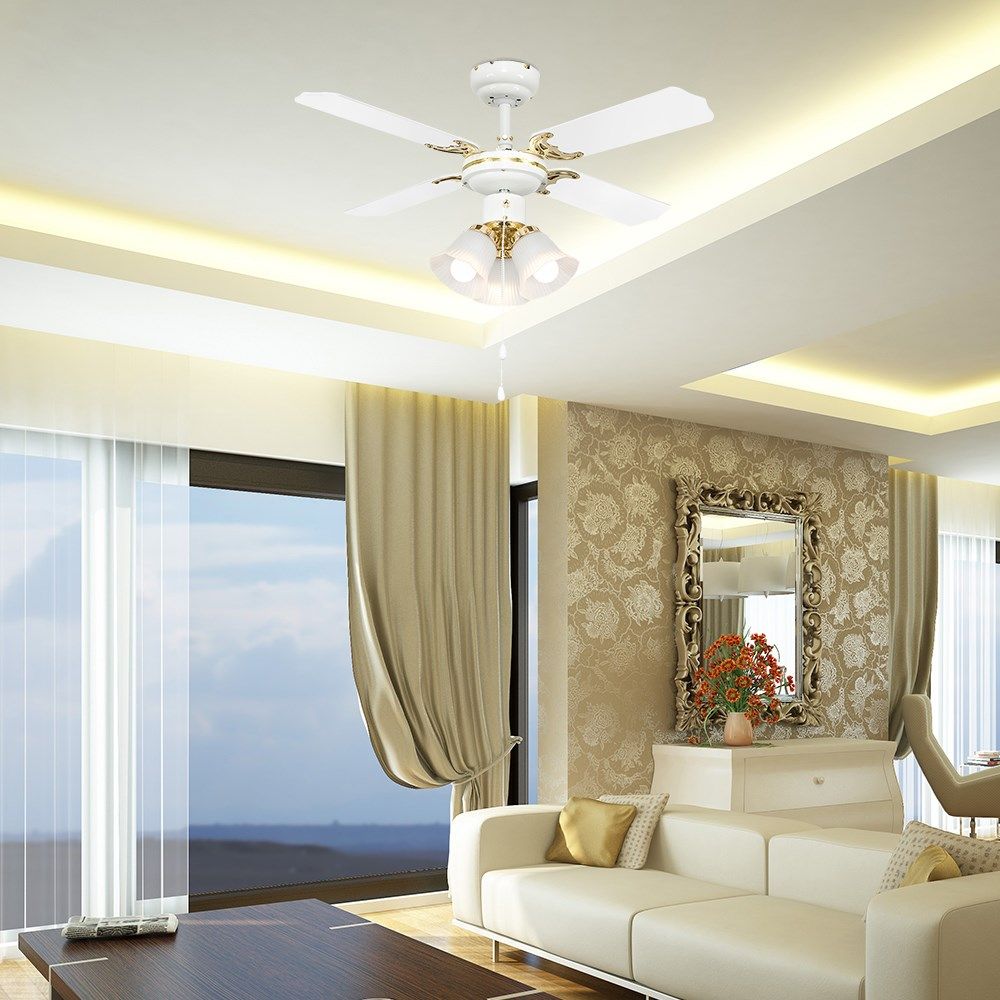4. How Ceiling Fans Can Save on Energy Bills
As a ceiling fan doesn’t produce cool or warm air, it simply moves existing cool or warm air around, it can save on energy bills the whole year-round.
5. Four-Blade or Five-Blade Ceiling Fan?
There is little difference in performance between 4 and 5-blade fans and so our advice is simply to choose the one that you think looks best.
6. Are Ceiling Fans Easy to Install?
Ceiling fans should only be fitted by a qualified electrician or an experienced DIY fanatic. Health and safety is always the first concern when dealing with mains electricity.
7. Can I Install a Ceiling Fan Where a Light Fixture is?
Yes you can, however, you’ll need to install a new fitting that will take the weight of the ceiling fan – the existing electrical box won’t be strong enough.
8. Are Ceiling Fans Noisy?
When switched on a ceiling fans motor hums softly, this is normal. If your ceiling fan is making a louder noise, switch it off and consult an electrician or contact the manufacturer.
9. What to do if the Fan is Running too Slowly?
The most common reason for a ceiling fan running too slowly is because of a faulty capacitor. If your fan is running slowly ask a qualified electrician to take a look and change the capacitor.
10. My Fan is Wobbly – What do I do?
Usually this happens because some of the components are loose. You need to check that the blades and all bolts and screws are secured tightly – if, having done that, the problem persists, stop using the fan and consult an electrician or the manufacturer.






